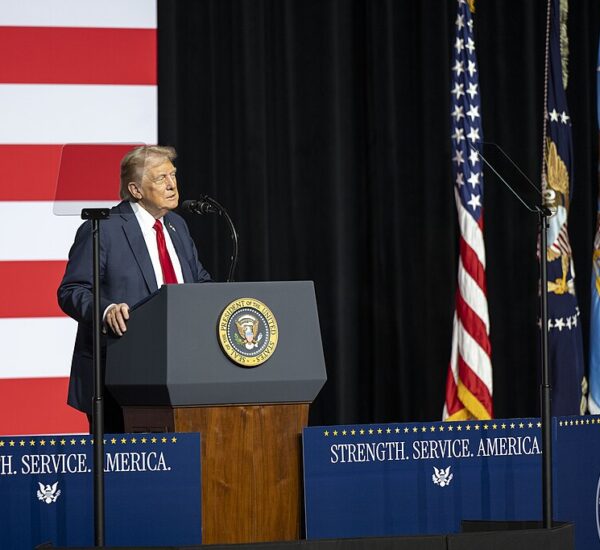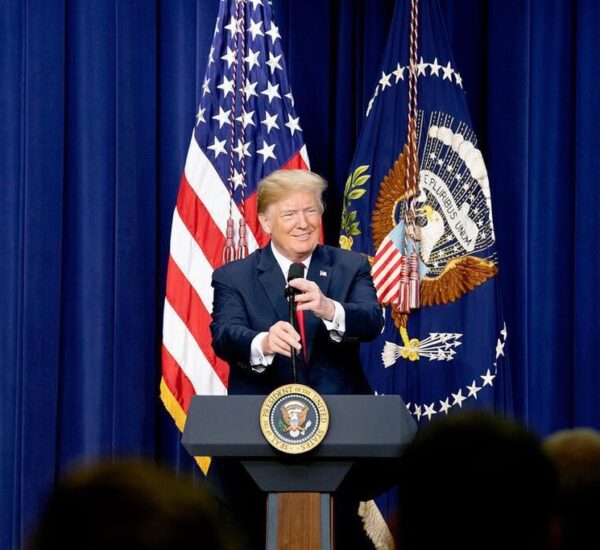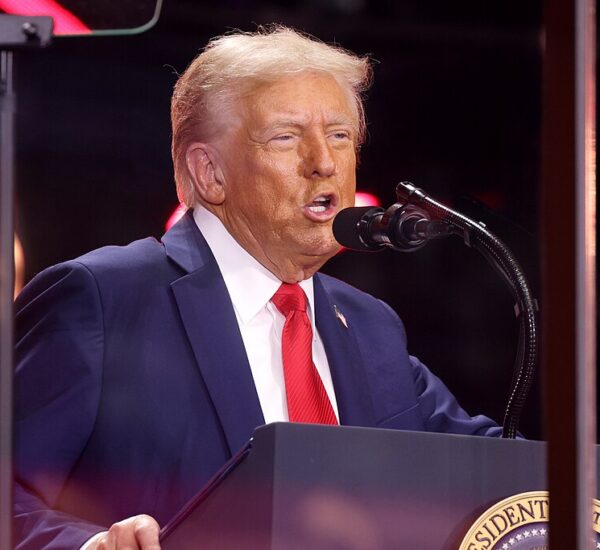Russia Responds To Trump
In a bold and troubling move that signals a new chapter in global nuclear tensions, the Russian government has announced it will no longer honor its self-imposed ban on deploying intermediate- and short-range missiles. The decision comes in direct response to what Moscow describes as increased U.S. military activity near its borders, including in Eastern Europe and across the Asia-Pacific.
Russia’s announcement follows President Donald Trump’s recent directive to move two U.S. nuclear-armed submarines closer to Russian waters — a strong deterrent gesture meant to hold Moscow accountable and pressure it to halt its aggression, particularly in Ukraine.
According to a Sunday statement from Russia’s Foreign Ministry, the conditions that once justified its missile moratorium have now “ceased to exist,” citing what it calls a dangerous buildup of Western missile systems. Moscow alleges these deployments represent a direct threat to its national security.
“This is the new normal,” said former Russian President Dmitry Medvedev, now deputy chair of the Russian Security Council. Medvedev blamed NATO’s “anti-Russian” posture for forcing the Kremlin’s hand, warning that further escalations are on the table.
Just last week, Trump ordered U.S. nuclear missile assets repositioned in allied European territory — a move Washington has described as a necessary “strategic deterrence adjustment.” Though the Pentagon hasn’t released full details, multiple sources suggest the weapons systems involved fall within the 500–5,500 km range previously banned under the now-defunct INF Treaty.
A Treaty in the Rearview Mirror
The Intermediate-Range Nuclear Forces (INF) Treaty, signed in 1987 by President Ronald Reagan and Soviet leader Mikhail Gorbachev, once prohibited land-based missiles with ranges of 500 to 5,500 kilometers. However, the U.S. formally exited the agreement in 2019 under President Trump, citing persistent violations by Russia — a charge the Kremlin continues to deny.
In the years following the U.S. withdrawal, Moscow had maintained a one-sided moratorium, warning it would only continue if the U.S. and NATO refrained from placing similar systems near Russian borders. That restraint is now officially over.
On Monday, Russia’s Foreign Ministry accused the U.S. and NATO of deploying advanced missile systems under the guise of military drills, including:
- The MK70 launchers transferred to Denmark.
- The Typhon missile systems sent to Australia and the Philippines.
- The Dark Eagle hypersonic missiles used in joint U.S.-Australian exercises.
- Precision Strike Missiles (PrSM) tested in Palau and now integrated into HIMARS platforms stationed in Germany, Ukraine, and allied Pacific nations.
Moscow argues these combined deployments are destabilizing and significantly heighten the risk of direct conflict between nuclear-armed states.
“The Western missile presence near our territory is a clear provocation,” the ministry stated, warning that a formal response is now under review. Russian leadership will determine the “scope and timing” of future deployments, with analysts suggesting Kaliningrad, the Black Sea, and Russian bases abroad as likely sites.
Kremlin spokesperson Dmitry Peskov reiterated that Russia “reserves the right” to position missiles near NATO territory in retaliation for what it calls growing military provocations. Deputy Foreign Minister Sergey Ryabkov called the end of Russia’s moratorium “an inevitable step,” saying the West ignored numerous Russian warnings.
The Foreign Ministry concluded by noting that U.S. mass production of previously banned systems is already underway, further eroding any basis for restraint.
Tensions Rooted in Ukraine, NATO, and Cyber Conflict
This latest escalation cannot be viewed in isolation. U.S.–Russia tensions have been heating up for years — particularly after Russia’s full-scale invasion of Ukraine in 2022, which has now dragged on despite President Trump’s clear demand for an end to the conflict.
Trump, who has pledged to secure peace in Ukraine within 24 hours of returning to the White House, has repeatedly blamed the Biden-era foreign policy establishment for emboldening Moscow through weakness and indecision.
Meanwhile, Russia has remained defiant on multiple fronts — from cyberattacks and election meddling to supporting authoritarian regimes in Syria, Venezuela, and Belarus. These actions have brought Russia into deeper conflict with the United States and its allies.
Another long-standing flashpoint is NATO expansion. Since the fall of the Soviet Union, NATO has steadily moved eastward, absorbing former Soviet republics and Warsaw Pact nations. Russia sees this as a grave betrayal of past assurances and a direct threat to its strategic security.
The Bottom Line
With Russia scrapping a key missile restriction and Trump positioning U.S. nuclear forces closer to the frontlines, the world faces a high-stakes standoff that many hoped was relegated to the Cold War past.
For conservatives, the lesson is clear: peace through strength remains the only path forward. President Trump’s tough posture is a needed correction to years of diplomatic drift, sending a powerful message that American security — and the security of our allies — will not be compromised.






